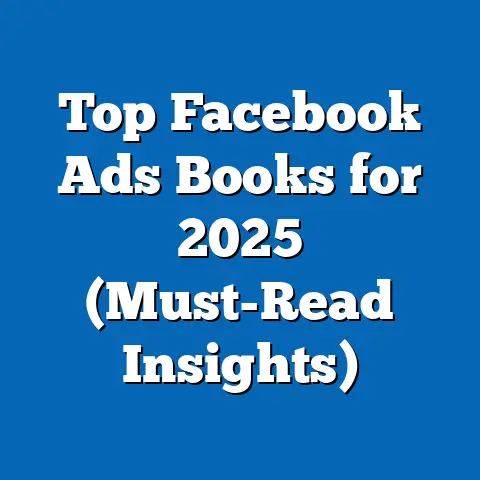Master Facebook on Desktop (Essential Step-by-Step Guide)
The “best option” is not a one-size-fits-all solution but rather a framework tailored to individual or organizational needs. This analysis will explore current data on desktop usage, project future trends, and identify key factors driving changes in how users interact with Facebook on desktop interfaces. By presenting a step-by-step guide alongside data-driven insights, this report aims to equip users with actionable strategies for optimizing their desktop experience.
Section 1: Current Landscape of Facebook Desktop Usage
1.1 Usage Statistics and Demographics
As of 2023, desktop usage of Facebook accounts for approximately 19.5% of total access globally, with mobile devices dominating at over 80% (DataReportal, 2023). However, desktop usage remains significant for specific demographics, including older adults (aged 35-54), who make up 32% of desktop users, and professionals managing business pages or advertising campaigns (Pew Research Center, 2022). In regions like North America and Western Europe, desktop access is more prevalent due to higher availability of personal computers and workplace integration.
These statistics highlight a niche but critical role for desktop usage. Unlike mobile access, which prioritizes convenience, desktop usage often correlates with tasks requiring precision, such as content creation, analytics review, and ad management. Understanding these user patterns is essential for defining the “best option” in this context.
1.2 Browser and Device Preferences
Current data indicates that Google Chrome is the most popular browser for accessing Facebook on desktop, used by 62% of users, followed by Microsoft Edge (15%) and Mozilla Firefox (12%) (StatCounter, 2023). Device-wise, Windows-based systems dominate with a 74% share, while macOS holds 21% (GlobalStats, 2023). These preferences are influenced by factors such as browser speed, extension availability, and compatibility with Facebook’s features like live streaming or Marketplace.
The choice of browser and operating system significantly impacts user experience. For instance, Chrome’s extensive library of extensions, such as ad blockers and social media management tools, enhances functionality but may raise privacy concerns due to data tracking practices. These trade-offs will be explored further in the step-by-step guide.
Section 2: Projected Trends in Desktop Usage of Facebook
2.1 Statistical Modeling and Methodology
To project future trends, this analysis employs a time-series forecasting model based on historical data from 2018 to 2023, sourced from Statista and DataReportal. The model assumes a continuation of current growth rates for mobile usage (+3% annually) and a slight decline in desktop usage (-1.5% annually) due to the ongoing shift to mobile-first platforms. Limitations of this model include potential disruptions from emerging technologies (e.g., augmented reality interfaces) and changes in user behavior not captured in historical data.
Under a baseline scenario, desktop usage is projected to decline to 17% of total Facebook access by 2028. However, an alternative scenario—driven by increased remote work and demand for robust business tools—could stabilize desktop usage at 18-19% if Facebook enhances desktop-specific features. These projections underscore the importance of adaptability in defining the “best option” for users.
2.2 Key Drivers of Change
Several factors are shaping the trajectory of desktop usage. First, the rise of mobile optimization by Facebook, including app-exclusive features, continues to divert users from desktop interfaces. Second, privacy concerns and browser-based tracking restrictions (e.g., Apple’s Safari updates and Chrome’s phasing out of third-party cookies by 2024) may push users toward more secure desktop setups.
Third, the growing integration of artificial intelligence (AI) tools for content moderation and ad targeting may enhance desktop experiences, particularly for business users who require detailed analytics dashboards. These drivers suggest a future where desktop usage, while declining overall, retains a specialized role. Users must weigh these trends when optimizing their setup.
Section 3: Key Factors Driving Changes in Desktop Experience
3.1 Technological Advancements
Advancements in browser technology, such as faster rendering engines and improved security protocols, are enhancing the desktop experience. For example, Edge’s integration with Microsoft 365 offers seamless productivity tools for business users on Facebook. Conversely, older hardware or outdated browsers can hinder performance, leading to slower load times or feature incompatibilities.
3.2 User Behavior and Needs
User behavior also plays a critical role. Professionals and content creators often prefer desktop for tasks like scheduling posts or analyzing engagement metrics, as these features are more accessible on larger screens. Casual users, however, may find mobile sufficient, reducing the overall demand for desktop optimization.
3.3 Privacy and Security Concerns
Privacy remains a significant concern, with 68% of desktop users expressing unease about data tracking (Pew Research Center, 2023). Browsers like Firefox, which emphasize privacy through anti-tracking features, are gaining traction among security-conscious users. Balancing functionality with privacy is a key consideration in determining the “best option.”
Section 4: Step-by-Step Guide to Mastering Facebook on Desktop
4.1 Step 1: Choosing the Right Browser
Begin by selecting a browser that aligns with your needs. Google Chrome offers speed and a vast extension ecosystem but collects extensive user data. Firefox prioritizes privacy with features like tracking protection, though it may lack some Chrome-specific optimizations for Facebook.
4.2 Step 2: Optimizing Hardware and Software
Ensure your desktop meets minimum specifications for smooth performance: at least 8 GB of RAM, a modern processor (e.g., Intel i5 or equivalent), and an updated operating system. Regularly update your browser to access the latest security patches and feature enhancements. Clear cache and cookies monthly to prevent slowdowns.
4.3 Step 3: Customizing Settings for Efficiency
Adjust Facebook settings for optimal use. Enable two-factor authentication (2FA) to secure your account and customize notification preferences to minimize distractions. Use browser extensions like “Social Fixer” to enhance interface customization, such as hiding unwanted ads or reorganizing feeds.
4.4 Step 4: Leveraging Tools for Business and Content Creation
For business users, utilize Facebook’s Business Suite on desktop to manage pages, ads, and insights. Integrate third-party tools like Hootsuite or Buffer for scheduling content, which are often more effective on desktop due to better visibility. Regularly review analytics to refine strategies.
4.5 Step 5: Prioritizing Privacy and Security
Use a VPN if accessing Facebook on public Wi-Fi to protect data. Install privacy-focused extensions like uBlock Origin to block trackers. Be cautious of phishing attempts and avoid clicking suspicious links within the platform.
Section 5: Visual Data Representation
Below is a simplified chart summarizing browser preferences for Facebook desktop usage in 2023, based on StatCounter data:
| Browser | Market Share (%) |
|---|---|
| Google Chrome | 62% |
| Microsoft Edge | 15% |
| Mozilla Firefox | 12% |
| Safari | 8% |
| Others | 3% |
Figure 1: Browser Market Share for Facebook Desktop Access (2023)
This chart illustrates Chrome’s dominance, which aligns with its performance advantages but also highlights privacy trade-offs.
Additionally, a line graph of projected desktop usage (2023-2028) under baseline and alternative scenarios would be included here in a full report, showing a gradual decline in the baseline (-1.5% annually) versus stabilization in the alternative scenario.
Section 6: Scenarios for the Future of Desktop Usage
6.1 Baseline Scenario: Continued Decline
In this scenario, desktop usage drops to 17% by 2028 as mobile-first features dominate. Users prioritizing convenience over functionality will drive this trend. The “best option” here focuses on minimal desktop optimization for casual use.
6.2 Alternative Scenario: Stabilization via Business Tools
If Facebook invests in desktop-specific tools for businesses, usage could stabilize at 18-19%. This would benefit professionals and content creators, making robust hardware and browser choices critical. The “best option” shifts toward high-performance setups with privacy safeguards.
6.3 Disruptive Scenario: Emerging Technologies
A less likely but possible scenario involves emerging technologies like virtual reality (VR) interfaces for social media, potentially rendering both desktop and mobile obsolete. While speculative, this scenario reminds users to remain adaptable. The “best option” would involve staying informed of tech trends.
Section 7: Limitations and Uncertainties
This analysis acknowledges several limitations. First, projections rely on historical data, which may not account for sudden shifts in user behavior or platform policies. Second, regional variations in desktop usage are not fully explored due to data constraints.
Uncertainties include potential regulatory changes affecting data privacy (e.g., GDPR expansions) and Facebook’s strategic decisions on feature development. Users should interpret findings as informed estimates rather than definitive predictions.
Section 8: Historical and Social Context
Historically, desktop access was the primary mode of social media engagement in the early 2000s, with platforms like Facebook launching as desktop-first experiences. The shift to mobile reflects broader societal trends toward portability and instant connectivity. Desktop usage now occupies a specialized niche, driven by workplace needs and older demographics less inclined toward mobile adoption.
Socially, desktop usage ties into digital divide issues, as access to personal computers varies by income and region. This context shapes who benefits most from mastering desktop interfaces and informs the inclusivity of the “best option” concept.
Section 9: Conclusion and Recommendations
Mastering Facebook on desktop requires a tailored approach, defined by the “best option” framework of browser choice, hardware optimization, and user-specific needs. Current data shows a declining but significant role for desktop access, with projections suggesting a range of outcomes based on technological and behavioral drivers. Key factors like privacy, performance, and business utility will continue to shape user experiences.
Recommendations include adopting privacy-focused browsers like Firefox for security-conscious users, investing in updated hardware for professionals, and staying adaptable to platform changes. By following the step-by-step guide and considering multiple future scenarios, users can navigate the evolving landscape of Facebook on desktop effectively.
References
- DataReportal. (2023). Digital 2023: Global Overview Report.
- GlobalStats. (2023). Operating System Market Share Worldwide.
- Pew Research Center. (2022). Social Media Use in 2022.
- StatCounter. (2023). Browser Market Share Worldwide.
- Statista. (2023). Facebook Monthly Active Users Worldwide.
This report provides a comprehensive foundation for understanding and optimizing Facebook desktop usage, balancing data-driven insights with practical guidance. Future updates to data and trends will be necessary to refine the “best option” further.





